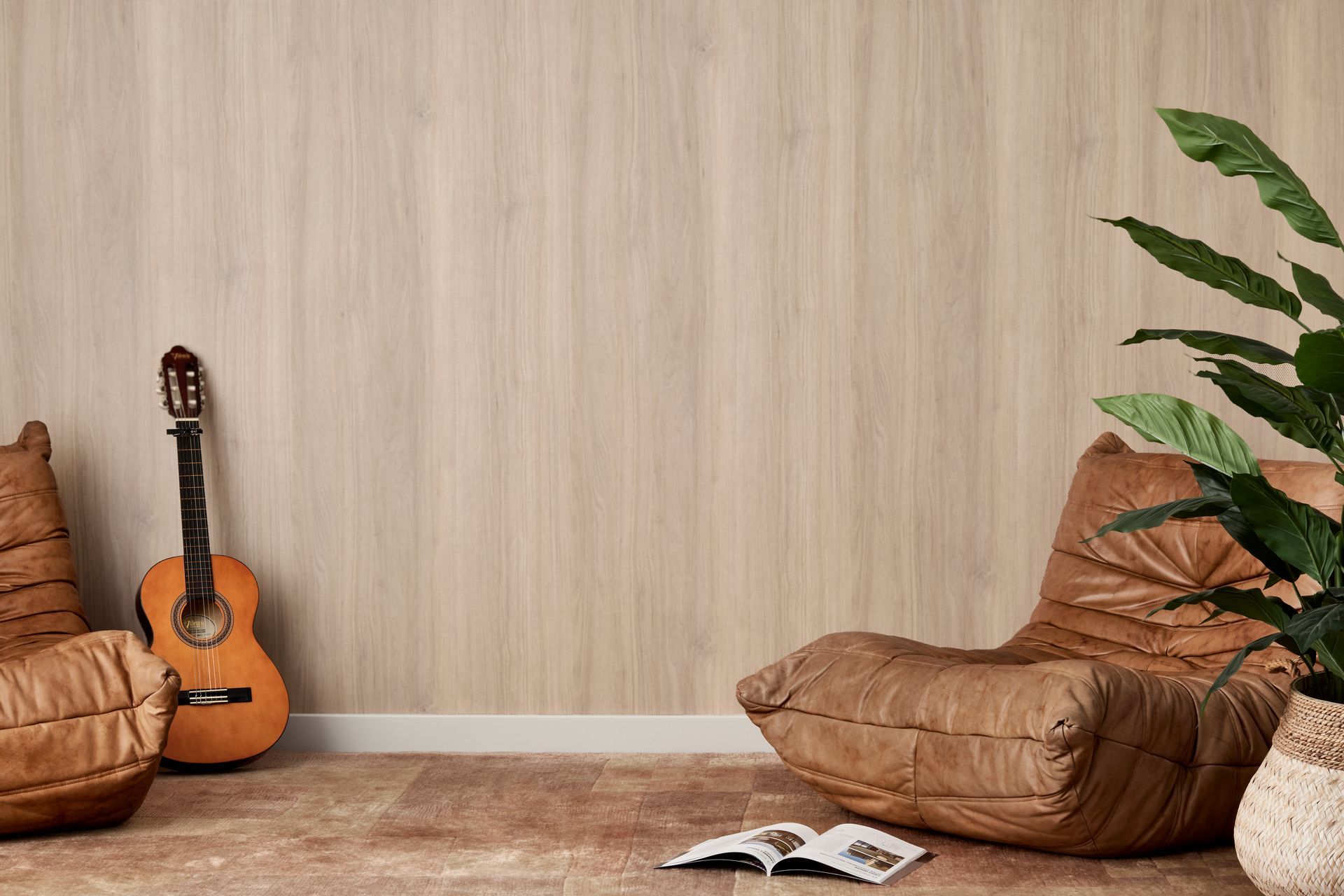How to choose the best acoustic linings for interiors: expert tips and recommendations
Written by
09 September 2024
•
5 min read

Designing an interior space that maximises comfort and functionality demands a deep understanding of acoustic principles, especially when it comes to managing reverberation. Achieving optimal reverberation control and clear speech intelligibility are essential for any interior environment and by thoughtfully incorporating acoustic solutions, designers can create spaces that are inspiring, tranquil and productive.
To better understand how to choose the best solutions, we spoke to Screenwood’s Cameron Nelson who shares how high-performance acoustic linings improve the experience of a space.
Reverberation’s role in acoustic performance
To understand acoustics, it’s important to distinguish between two types of sound: direct sound and reverberant sound, shares Nelson.
“Direct sound travels directly from the source to the listener without any reflections, providing clarity and immediacy. Reverberation, on the other hand, occurs when sound bounces multiple times from the walls, floor, ceiling, or objects within a room.”


The more times it bounces, the longer it takes for the sound to reach the listener’s ears and the longer the sound appears to ‘ring’. This phenomenon is quantified by the ‘reverberation time’ of the space, typically measured in seconds. For instance, a ‘dead’ space like a recording studio may have a reverberation time of around 0.2 seconds, while a ‘live’ space, such as a cathedral, can exceed two seconds.
“Designers can effectively reduce reverberation and improve acoustic comfort by selecting materials with higher NRC values for the walls, floors, ceilings, and objects within a space,” shares Nelson.
The Noise Reduction Coefficient (NRC) is a metric used to quantify the sound absorption capabilities of materials for speech and similar sounds, indicating the percentage of sound energy absorbed rather than reflected. Partnering with an acoustical consultant is crucial in determining the exact acoustic needs and NRC requirements specific to a space's purpose. This collaboration allows for the exploration of various linings to achieve ideal acoustics and effective reverberation control through strategic surface area treatments.

Acoustic linings: what to look for
When assessing acoustic linings, it’s important to understand the products’s environmental sustainability, acoustic performance, aesthetic options, durability and cost-effectiveness. Each of these elements has a part to play in the success of the solution.
To gain an understanding of the product’s certifications and alignment with your sustainability objectives, look for a transparent supply chain and select a product from a company like Screenwood that has stringent and transparent supply chain protocols.
“For wood-based products, ensure they hold PEFC™ wood certifications, and look for products certified by Global GreenTag which align with major green building rating tools such as LEED®, International WELL™, Building Standard, Green Star®, and BREEAM®,” shares Nelson.
For interiors requiring high fire ratings, choose a high-performance acoustic product with a certified Group 1 fire rating that also has aesthetic appeal.
Aesthetics are just as crucial as the technical performance of a product, for example, incorporating timber infuses a space with natural warmth and fosters a connection to nature.
“Screenwood products prefinished in NAVURBAN Diamond™ for example, empower seamless colour matching with decorative, acoustic and flat joinery in the same finish.”
NAVURBAN Diamond™ finishes have a tough, durable surface that eliminates the need for annual staining or oiling, reducing maintenance expenses.
Prefinished products have the added benefit of accelerating project timelines and removing the need for off-site fabrication, as well as providing precise colour matching, thereby minimising the risk of unforeseen finishing expenses.

The proven benefits of reverberation control
A healthcare study in Sweden looked at patient outcomes in an intensive care ward before and after the installation of material that reduced the reverberation time from 0.9 seconds to 0.4 seconds. In interviews with the two groups of patients, they demonstrated significantly different answers to just one question – how much they believed the staff cared for them.
“Lower reverberation times mean human interactions are easier, communication is facilitated, and the environment is more peaceful, caring and, in this case, more healing,” says Nelson.
In an education study done in Germany, a teacher’s heart rate was recorded in different acoustic conditions. In a classroom with a reverberation time of 0.4 seconds, the teacher’s heart rate increased by four beats per minute for every 10-decibel increase in noise. However, in a classroom with a reverberation time of 0.7 seconds, it increased by ten beats per minute for every 10 decibel increase.
“In this environment, noise is stressful, but noise and reverberation are really stressful,” shares Nelson. “Creating reverberation solutions through careful selection of acoustic linings is the easiest way to address challenging environments such as classrooms and hospitals.”
As designers and manufacturers, Screenwood is able to provide comprehensive solutions that have a significant impact on how users experience spaces. Their technical expertise, master craftsmanship, and genuine care for people and the planet have led them to collaborate with leading architects, designers, and builders, shaping rich and sustainable spatial experiences that enhance comfort, well-being, and a connection to our natural world.
Explore Screenwood’s acoustic products including MDF Panels, Timber Panels and Soundlina wall paper.